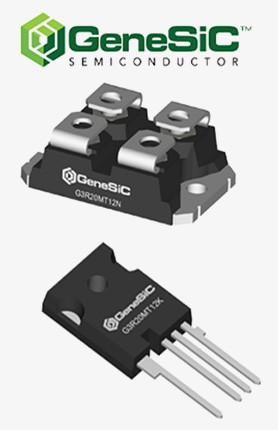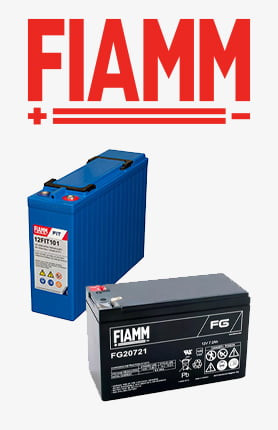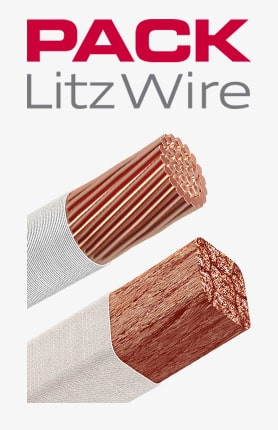-
BackX
-
Components
-
-
Category
-
Semiconductors
- Diodes
- Thyristors
-
Electro-insulated Modules
- Electro-insulated Modules | VISHAY (IR)
- Electro-insulated Modules | INFINEON (EUPEC)
- Electro-insulated Modules | Semikron
- Electro-insulated Modules | POWEREX
- Electro-insulated Modules | IXYS
- Electro-insulated Modules | POSEICO
- Electro-insulated Modules | ABB
- Electro-insulated Modules | TECHSEM
- Go to the subcategory
- Bridge Rectifiers
-
Transistors
- Transistors | GeneSiC
- SiC MOSFET Modules | Mitsubishi
- SiC MOSFET Modules | STARPOWER
- Module SiC MOSFET ABB’s
- IGBT Modules | MITSUBISHI
- Transistor Modules | MITSUBISHI
- MOSFET Modules | MITSUBISHI
- Transistor Modules | ABB
- IGBT Modules | POWEREX
- IGBT Modules | INFINEON (EUPEC)
- Silicon Carbide (SiC) semiconductor elements
- Go to the subcategory
- Gate Drivers
- Power Blocks
- Go to the subcategory
- Electrical Transducers
-
Passive components (capacitors, resistors, fuses, filters)
- Resistors
-
Fuses
- Miniature Fuses for electronic circuits - ABC & AGC Series
- Tubular Fast-acting Fuses
- Time-delay Fuse Links with GL/GG & AM characteristics
- Ultrafast Fuse Links
- Fast-acting Fuses (British & American standard)
- Fast-acting Fuses (European standard)
- Traction Fuses
- High-voltage Fuse Links
- Go to the subcategory
- Capacitors
- EMI Filters
- Supercapacitors
- Power surge protection
- TEMPEST emission revealing filters
- Surge arrester
- Go to the subcategory
-
Relays and Contactors
- Relays and Contactors - Theory
- 3-Phase AC Semiconductor Relays
- DC Semiconductor Relays
- Controllers, Control Systems and Accessories
- Soft Starters and Reversible Relays
- Electromechanical Relays
- Contactors
- Rotary Switches
-
Single-Phase AC Semiconductor Relays
- AC ONE PHASE RELAYS 1 series| D2425 | D2450
- One phase semiconductor AC relays CWA and CWD series
- One phase semiconductor AC relays CMRA and CMRD series
- One phase semiconductor AC relays - PS series
- Double and quadruple semiconductor AC relays - D24 D, TD24 Q, H12D48 D series
- One phase semiconductor relays - gn series
- Ckr series single phase solid state relays
- One phase AC semiconductor relays for DIN bus - ERDA I ERAA series
- 150A AC single phase relays
- Rail Mountable Solid State Relays With Integrated Heat Sink - ENDA, ERDA1 / ERAA1 series
- Go to the subcategory
- Single-Phase AC Semiconductor Relays for PCBs
- Interface Relays
- Go to the subcategory
- Cores and Other Inductive Components
- Heatsinks, Varistors, Thermal Protection
- Fans
- Air Conditioning, Accessories for Electrical Cabinets, Coolers
-
Batteries, Chargers, Buffer Power Supplies and Inverters
- Batteries, Chargers - Theoretical Description
- Modular Li-ion Battery Building Blocks, Custom Batteries, BMS
- Batteries
- Battery Chargers and Accessories
- Uninterruptible Power Supply and Buffer Power Supplies
- Inverters and Photovoltaic Equipments
- Energy storage
- Fuel cells
- Lithium-ion batteries
- Go to the subcategory
-
Automatics
- Spiralift Lifts
- Futaba Drone Parts
- Limit Switches, Microswitches
- Sensors, Transducers
-
Infrared Thermometers (Pyrometers)
- IR-TE Series - Water-proof Palm-sized Radiation Thermometer
- IR-TA Series - Handheld Type Radiation Thermometer
- IR-H Series - Handheld Type Radiation Thermometer
- IR-BA Series - High-speed Compact Radiation Thermometer
- IR-FA Series - Fiber Optic Radiation Thermometer
- IR-BZ Series - Compact Infrared Thermometers
- Go to the subcategory
- Counters, Time Relays, Panel Meters
- Industrial Protection Devices
- Light and Sound Signalling
- Thermographic Camera
- LED Displays
- Control Equipments
- Go to the subcategory
-
Cables, Litz wires, Conduits, Flexible connections
- Wires
- Cable feedthroughs and couplers
- Litz wires
- Cables for extreme applications
- Sleevings
-
Braids
- Flat Braids
- Round Braids
- Very Flexible Flat Braids
- Very Flexible Round Braids
- Cylindrical Cooper Braids
- Cylindrical Cooper Braids and Sleevings
- Flexible Earthing Connections
- Galvanized and Stainless Steel Cylindrical Braids
- PCV Insulated Copper Braids (temp. up to 85C)
- Flat Aluminium Braids
- Junction Set - Braids and Tubes
- Go to the subcategory
- Traction Equipment
- Cable Terminals
- Flexible Insulated Busbars
- Flexible Multilayer Busbars
- Cable Duct Systems
- Go to the subcategory
- View all categories
-
Semiconductors
-
-
- Suppliers
-
Applications
- CNC Machine Tools
- DC and AC Drives (Inverters)
- Energetics
- Energy bank
- Equipment and Components for Hazardous Areas [Ex]
- Equipment for Distribution, Control and Telecommunications Cabinets
- HVAC Automation
- Induction Heating
- Industrial Automation
- Industrial Protective Devices
- Machines for Drying and Wood Processing
- Machines for Thermoforming Plastics
- Mining, Metallurgy and Foundry
- Motors and Transformers
- Power Supplies (UPS) and Rectifier Systems
- Printing
- Temperature Measurement and Regulation
- Test and Laboratory Measurements
- Tram and Railway Traction
- Welding Machines
-
Assembly
-
-
Inductors
-
-
Induction devices
-
-
Service
-
- Contact
- Zobacz wszystkie kategorie
Batteries | Victron Energy
Victron Energy Batteries for Photovoltaics - Gel and AGM in VRLA Technology
VRLA (Valve Regulated Lead Acid) means valve-regulated lead-acid batteries. Gas will be released through a safety valve in case of overcharge or cell damage. VRLA batteries are completely...
Victron Energy Batteries for Photovoltaics - Gel and AGM in VRLA Technology
VRLA (Valve Regulated Lead Acid) means...
Categories
| Image | View the product | No. Manufacturer | ||||
|---|---|---|---|---|---|---|
| picture_as_pdf |
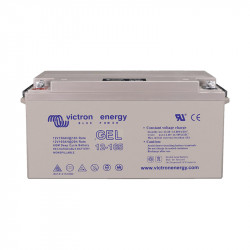
|
Victron energy | VICTRON ENERGY gel batteries for cyclic work | SEE IT | -- | On Order |
| picture_as_pdf |
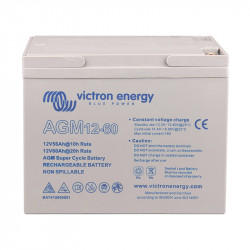
|
Victron energy | AGM Vicron Energy batteries for cyclic work | SEE IT | -- | On Order |
Victron Energy Batteries for Photovoltaics - Gel and AGM in VRLA Technology
VRLA (Valve Regulated Lead Acid) means valve-regulated lead-acid batteries. Gas will be released through a safety valve in case of overcharge or cell damage. VRLA batteries are completely maintenance-free.
Maintenance-Free AGM Batteries (VRLA)
AGM (Absorbent Glass Mat) refers to batteries with absorbent glass mats. In maintenance-free AGM batteries, the electrolyte is absorbed by the fibers of the glass mat placed between the plates through capillary action. Compared to gel batteries, they are more suitable for delivering energy in a short time at high current intensity.
Maintenance-Free Gel Batteries (VRLA)
In this type of battery, the electrolyte is in gel form. The general advantage of maintenance-free gel batteries is a longer lifespan and higher cyclic capacity than AGM batteries.
Deep Discharge Batteries (VRLA)
Victron Energy VRLA batteries have an exceptional discharge tolerance, even after deep or prolonged discharge. It should be emphasized that repeated deep discharges and maintaining a discharged state for a long time
Low Self-Discharge of Gel and AGM Batteries
Thanks to the use of lead-calcium grids and high-purity materials, Victron Energy VRLA batteries can be stored for a long period without recharging. The self-discharge rate is less than 2% per month at 20°C. Self-discharge doubles for every 10°C increase in temperature. Therefore, Victron VRLA batteries can be stored for up to a year without recharging if kept in a cool environment.
Discharge Characteristics of Victron Energy Batteries
Deep discharge AGM batteries have excellent performance and are recommended for high-current applications, such as those in starter batteries. Gel batteries, on the other hand, have a long lifespan under both float and cyclic conditions.
Effect of Temperature on Charging Voltage
Charging voltage should be lowered with increasing temperature. Temperature compensation is required if the expected battery temperature for photovoltaics is below 10°C or above 30°C for an extended period. Recommended temperature compensation for Victron VRLA batteries is -4mV/cell (-24mV/°C for 12V batteries). The reference point for temperature compensation is 20°C.
Charging Current for Gel and AGM Batteries
The charging current for Victron Energy photovoltaic batteries should not exceed 0.2C (20 A for a 100 Ah battery). The battery temperature will rise by more than 10°C if the charging current exceeds 0.2C. Therefore, temperature compensation is required if the charging current exceeds 0.2C.

